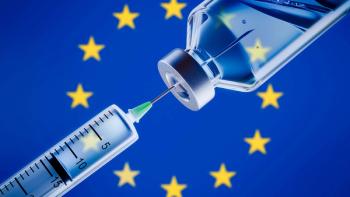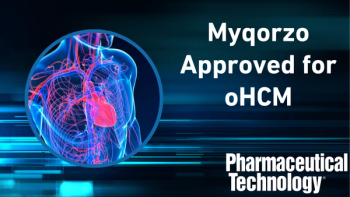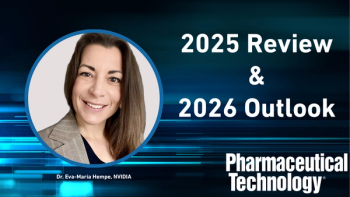
AAPS PharmSci 360 2025: Instrumentation Innovation for Bioanalysis
Pharmaceutical Technology® spoke with Steve Lowes, senior director of Scientific Affairs at IQVIA Laboratories, ahead of AAPS PharmSci 360 to discuss some of the unique instruments used to conduct bioanalysis.
The field of bioanalysis in the development of bio/pharmaceutical products is quickly advancing, and a variety of techniques is available to those working in the field. To learn more about the types of instrumentation used in bioanalysis, Pharmaceutical Technology® spoke with Steve Lowes, senior director of Scientific Affairs at IQVIA Laboratories, as part of our coverage of
According to Lowes, techniques like flow cytometry and polymerase chain reaction (PCR) are commonly used in bioanalysis; however, they challenge some of the established platforms mentioned in guidance documents. “The way to employ such alternative technologies is through an a priori, SOP [standard operating procedure]-driven and defendable assay validation that clearly defines the capabilities of the assay itself,” Lowes suggests.
“New LBA [ligand binding assay] platforms are also presenting some attractive strengths in terms of their sensitivity and even multiplexing,” Lowes continues. “For example, the proximity extension assay Olink has caught a lot of attention of late associated with the selectivity, the ability to do some multiplexing, and significantly, the sensitivity capabilities derived from the DNA tag hybridization that can be subsequently amplified using PCR. So many of these types of techniques are evolving from the proteomics field, but we are now adapting them to regulated bioanalysis, and when it comes to selectivity, liquid chromatography–mass spectrometry continues to be the benchmark.”
Steve will be monitoring the Rapid Fires: AI/ML in Bioanalysis session on Monday, Nov. 10, 2025 at 3PM CT at AAPS PharmSci 360 2025, being held Nov. 9–12 in San Antonio, Texas.
Click the video above to watch the interview.
About the speaker
Steve Lowes is Senior Director, Scientific Affairs at IQVIA Laboratories. Steve has 30+ years’ experience in bioanalysis with a focus on LC-MS and regulatory aspects and has been with the legacy LC-MS regulated bioanalytical lab of IQVIA Laboratories in Ithaca, NY since 1995. He is a regular presenter and author of publications on regulated bioanalysis, is co-editor of the text “Regulated Bioanalysis: Fundamentals and Practice,” and is the primary contributor to the popular
Transcript
Editor's note: This transcript is a lightly edited rendering of the original audio/video content. It may contain errors, informal language, or omissions as spoken in the original recording.
Hi, I'm Steve Lowes, Senior Director of Scientific Affairs at IQVIA Laboratories. I'm delighted to talk with you today.
We've seen a plethora of techniques and platforms targeted at biological analytes that have entered our bioanalytical laboratories, flow cytometry, PCR, in particular, are commonly discussed and applied, although they do challenge the established biological guidance precedents that I've already mentioned, the way to employ such alternative technologies is through an a priori, SOP driven and defendable assay validation that clearly defines the capabilities of the assay itself.
New LBA ligand binding platforms are also presenting some attractive strengths in terms of their sensitivity and even multiplexing.
For example, the proximity extension assay olink has caught a lot of attention of late associated with the selectivity, the ability to do some multiplexing, and significantly, the sensitivity capabilities derived from the DNA tag hybridization that can be subsequently amplified using PCR. So many of these types of techniques are evolving from the proteomics field, but we are now adapting them to regulated bio analysis and when it comes to selectivity, liquid chromatography, mass spectrometry continues to be the benchmark.
Again, proteomic originating LC-MS technologies are finding their way into the bioanalytical laboratories. A good example of this is high resolution mass spectrometry that we iqvia are heavily invested in for the primary reason that it can do things that a triple quadrupole instrument cannot do.
Now, historically, HRMS has been heavily applied to the characterization of peptides and proteins we now see in these instruments being routinely applied to quantitative bio analysis. Oligonucleotides and siRNA determinations are particularly well suited to HRMS, where conventional CID fragmentation in a triple quadrupole instrument may not always deliver the sensitivity that is required
Instead, high resolution and mass accuracy can address these assay needs. The antibody drug conjugate assays that I just mentioned are another good example here where the selectivity and the multiplexing flexibility of LC-MS can be further leveraged with high resolution mass spectrometry, and then many large molecule biomarker quantitative assays are also being demonstrated with HRMS. I think this is an exciting time for mass spectroscopists with a continuing pipeline with technology advancements finding practical application in our biological labs.I will go on to point that low flow rate chromatography with microflowrates. Now there's sub milliliter per minute and true nanoflow sub microliter per minute flow rates delivers increased sensitivity, but historically, such advanced LC techniques have presented some practical challenges around run times and robustness. Some interesting developments are coming along now, and hitting the market that are truly democratizing low flow chromatography.
I see these as having practical utility, even in high throughput bioanalytical labs. There's even a technology platform now that proposes doing away with chromatography altogether, using acoustic ejection droplets from a sample to enable sub second per sample bioanalytical quantitation for the right applications, and these were primarily in the discovery stages.
While it's difficult to envisage this having universal application in bio analysis, when combined with alternative separation technologies such as ion mobility, the scene is truly set for an evolution of rapid throughput improvements in the LC-MS laboratory, simplifying and standardizing LC-MS has been a trend from manufacturers for some time now.
This year, already, we are seeing the LC-MS systems that are being launched that are targeted at clinical laboratories with full integrated sample preparation, chromatographic separations and mass spec detection.
Bringing LC-MS into the scope of a traditional clinical analyzer is a very interesting concept, and I'm sure we'll all be watching this very closely.
Newsletter
Get the essential updates shaping the future of pharma manufacturing and compliance—subscribe today to Pharmaceutical Technology and never miss a breakthrough.




